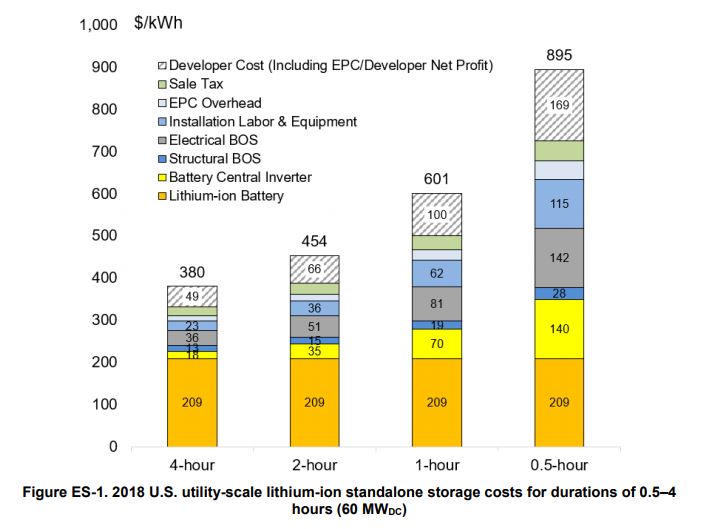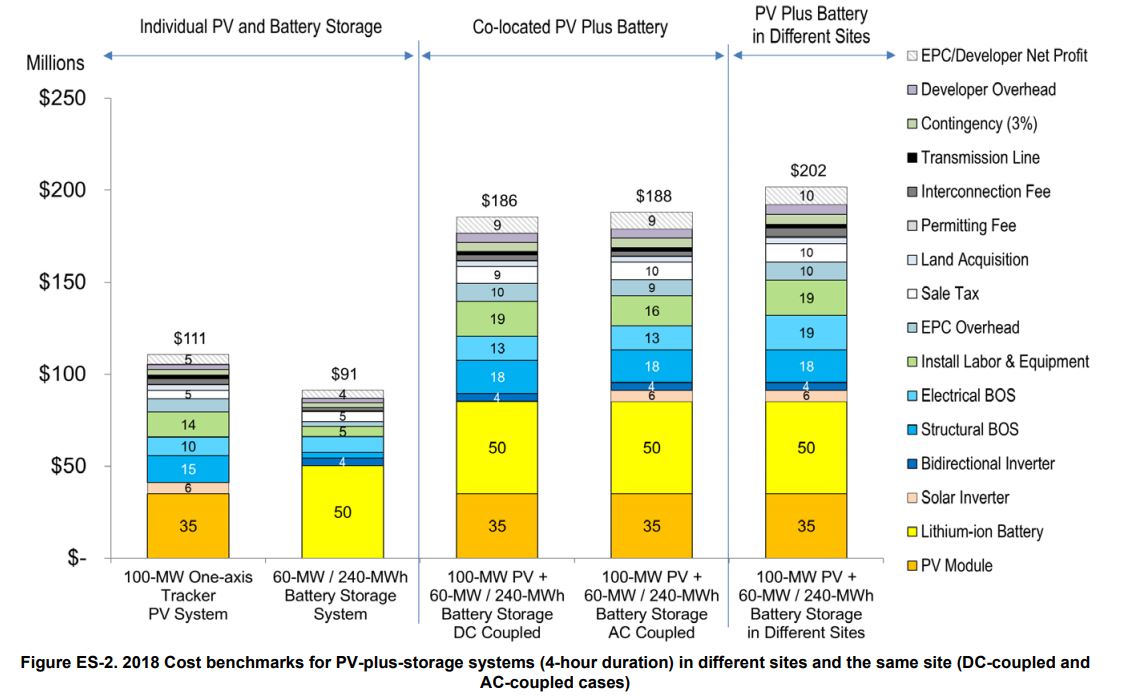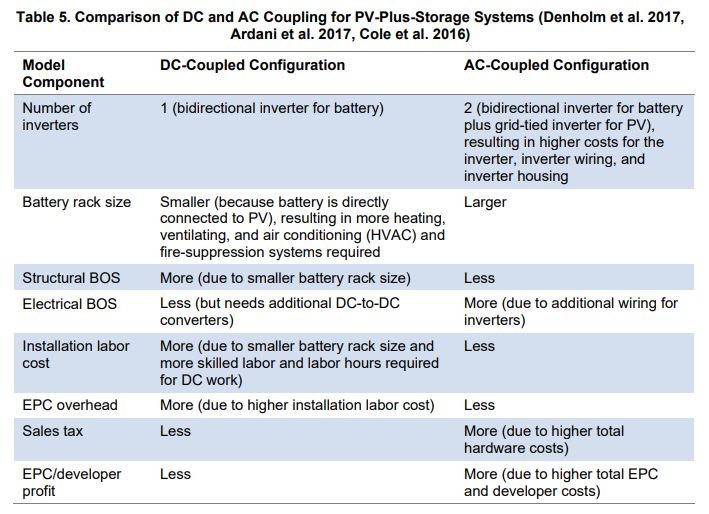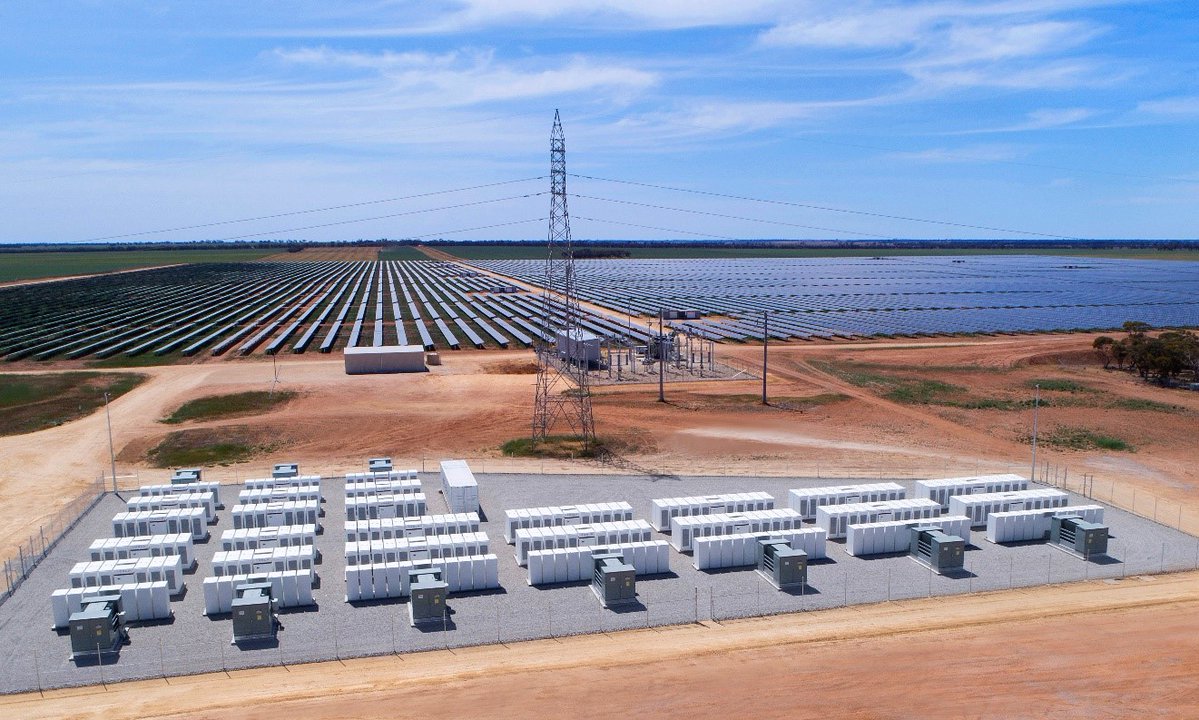From pv magazine USA
Building on its work documenting the costs of solar PV, the U.S. Department of Energy’s (DOE) National Renewable Energy Lab (NREL) has now put together a bottom-up price of utility-scale energy storage, including that attached to solar plants. And while NREL notes that utility-scale solar+storage is really in its infancy with only one project in the DOE’s national database – the 13 MW solar plus 52 megawatt-hour storage system in Kauai, Hawaii – we at pv magazine USA are seeing more and more of these systems entering into competitive solicitations and signing power contracts.
2018 U.S. Utility-Scale Photovoltaics Plus-Energy Storage System Costs Benchmark (pdf) breaks down various ways that solar+storage is applied: co-located versus separate, as well co-located that is DC-coupled versus AC-coupled, and various hours of duration ranging from 4 to 0.5 hours.
For the standalone systems, a constant per-energy-unit battery price of $209/kilowatt-hour (KWh) is assumed, with the system costs vary from $380/kWh (4-hour duration system) to $895/kWh (0.5-hour duration system). The battery cost accounts for 55% of total system cost in the 4-hour system, but only 23% in the 0.5-hour system.

One notable feature of these numbers is that for shorter system durations developer fees – the second-largest category at any scale – become an increasingly important component of overall system costs. One might expect, at the scale of these projects, that developer fees would be more competitive.
The second batch of analysis looks at a single axis tracker 100 MWdc solar pv system coupled with the above 60 MW / 240 MWh energy storage system. The storage systems are located off-site relative to the solar, as well onsite with the solar, and the onsite systems are DC or AC coupled.

The costs for the DC-coupled system was $186 million, the AC-coupled system $188 million, and the systems tied together – but from separate interconnection locations – cost $202 million (7-8% higher than the co-located systems).
Co-locating the PV and storage subsystems produces cost savings by reducing costs related to site preparation, land acquisition, permitting, interconnection, installation labor, hardware (via sharing of hardware such as switchgears, transformers, and controls), overhead, and profit.

AC- versus DC-coupled systems were very close in pricing. However, NREL noted that there will be other considerations driving this installation technique rather than installation costs alone: retrofit considerations, system performance, design flexibility, and operations and maintenance. And with hardware getting more efficient, the losses associated with AC versus DC systems are getting lower.
This report complements NREL’s concurrently released U.S. Solar Photovoltaic System Cost Benchmark: Q1 2018, which focused on historical costs of solar power without storage, as compared to the prior year.
This content is protected by copyright and may not be reused. If you want to cooperate with us and would like to reuse some of our content, please contact: editors@pv-magazine.com.








By submitting this form you agree to pv magazine using your data for the purposes of publishing your comment.
Your personal data will only be disclosed or otherwise transmitted to third parties for the purposes of spam filtering or if this is necessary for technical maintenance of the website. Any other transfer to third parties will not take place unless this is justified on the basis of applicable data protection regulations or if pv magazine is legally obliged to do so.
You may revoke this consent at any time with effect for the future, in which case your personal data will be deleted immediately. Otherwise, your data will be deleted if pv magazine has processed your request or the purpose of data storage is fulfilled.
Further information on data privacy can be found in our Data Protection Policy.